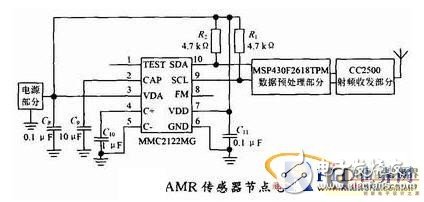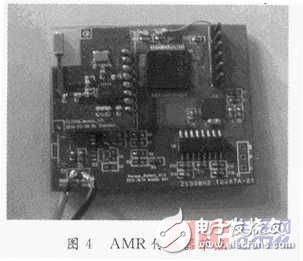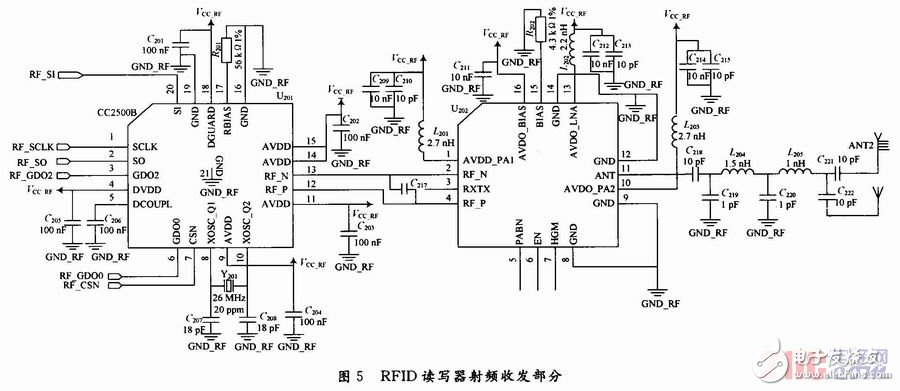Design of RFID-based RFID expandable AMR parking space detection system
Real-time detection of parking spaces is the key to realize intelligent management of parking lots and improve the utilization of parking spaces, and it is also a requirement for modernization of parking management. The development of parking lot parking space detection system generally undergoes three stages: ground sense coil detection, gate control and real-time parking position detection. The level of parking detection and detection technology is closely related. The rapid development of sensors is the guarantee of testing level. The basic structure of the first two parking detection systems is too large and the installation is too cumbersome; the reliability, real-time, accuracy, scalability, low energy consumption and small amount of engineering cannot meet the rapid development of parking lots.
WiFi is a short-range wireless technology that is connected by radio waves and is widely used for indoor wireless LAN networking. The outstanding advantages of WiFi are: First, the coverage of radio waves is wide, the radius can reach about 100 m; second, the transmission speed of WiFi is very fast, which can reach 54 Mb/s; the third is that the entry threshold is low, as long as the terminal devices supporting WiFi are You can join the WiFi network with certain permissions. In the parking space detection system, the WiFi technology is used to detect and transmit the node parameters of the detection system, and the transmission and control signals are controlled to avoid the cumbersome data lines in the parking lot, which has certain significance for reducing cost and energy consumption. The scalability of the system is more flexible.
Radio Frequency Identification (Radio Frequency IdenTIficaTIon, RFID) technology is a non-contact automatic identification technology realized by radio frequency communication. RFID in the 2.4 GHz band can reduce the corresponding equipment requirements in the system and reduce the sensitivity to frequency deviation. The introduction of RFID technology in the parking space detection system is conducive to the development of standard equipment. The uniqueness of the vehicle ID number can be used to quickly locate the parking space and facilitate the parking space parking.
This paper combines the parking lot requirements for the parking space detection system, and designs a WiFi-based RFID scalable AMR parking space detection system, which greatly reduces the cost and complexity of the parking space detection system, reduces the system energy consumption, and improves the system detection accuracy. And feasibility to achieve system scalability.
1 system design1.1 Parking space detection system design
The parking space detection system consists of a server, a wireless router, a parking space display, an RFID reader, and an AMR (Anisotropic Magneto ResisTIve) sensor node. The server is responsible for processing the uploaded data and sending the processing result to the display screen, which is responsible for sending instructions to the reader. The wireless router is an important part of the entire parking space detection system. It is responsible for building each part of the entire system into a local area network. The parking space display is used for real-time display of the status of the parking space. The RFID reader receives the data uploaded by the AMR sensor node, transmits it to the server through WiFi, and also receives instructions from the server to be forwarded to the AMR sensor node. The AMR sensor node is responsible for detecting the magnetic field on the parking space, judging whether there is a vehicle according to the change of the magnetic field, reflecting the detected situation through data, and packaging the data wirelessly to the RFID reader, node and RFID reader Communication is two-way.
In the system design, the system network structure is a star topology, the system RFID reader is a network controller, and the AMR sensor nodes are slave nodes. The network topology is shown in the figure. The RFID reader has a transceiver function, which is responsible for the management and control of the system's uplink and downlink data or commands; the AMR sensor node is responsible for magnetic field parameter data acquisition and data preprocessing.

Network topology diagram
1.2 System Circuit Design
The parking space detection system circuit design has:
(1) AMR sensor node circuit, including node power supply part, parking space magnetic field acquisition part, data preprocessing part and radio frequency transceiver part, etc.;
(2) RFID reader circuit, including RF transceiver part, WiFi part, data processing part and control part.
The basic circuit of the AMR sensor node is shown in the figure. The power supply part is operated by TI's APL5312-33 to the LDU function. The power supply input voltage is 4.2 V and the output is 3.3 V.

AMR sensor node basic circuit
The magnetic field strength detection uses the MMC2122MG AMR sensor, which has the characteristics of small size, long life, high sensitivity, low energy consumption and stability. It can be widely used in electronic compass, GPS navigation, position sensing, vehicle detection and magnetic measurement. The MMC2122MG is a two-axis magnetoresistive sensor that performs signal processing on the chip and integrates an I2C bus. It does not require A/D conversion and can be directly connected to the microprocessor.
The MSP430F2618 with low power consumption and high performance is used to preprocess the collected data, communicate with the 2.4 GHz radio frequency chip CC2500 through its own SPI port, and upload the preprocessed data packet to the RFID reader. It also receives instructions from the RFID reader.
The AMR sensor node is shown in Figure 4.

The RF transceiver part of the RFID reader is shown in Figure 5. The CC2500 communicates with the reader control unit via SPI. The CC2591 increases the link budget by providing a power transmitter to improve the output power. The CC2591 has a low noise figure. Noise amplifiers (LNAs) to improve receiver sensitivity, power amplifiers (PAs), switching RF matchers, and balun circuits for simple design in high-performance wireless applications.

2000W Digital Tv Transmitter,Wireless Fm Digital Transmitter,2Kw Wireless Digital Tv Transmitter,2Kw Video Digital Tv Transmitter
Anshan Yuexing Technology Electronics Co., LTD , https://www.yxhtfmtv.com